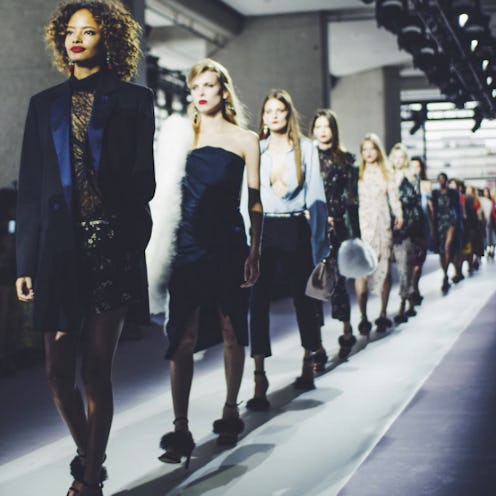Sophie Theallet's runway was one of the most diverse of all: there were curls, beachy waves, pin straight locks, and afros. Photo: @sharamdiniz
"There's not one singular idea of a person," said Redken's Guido Palau backstage at Alexander Wang. "It's about the realness of the girl." And with that statement, Palau echoed the resounding runway theme of the season: it's all about the individual. Again and again, from Rodarte to Burberry, designers did away with armies of model clones and played up each models' individuality through their hair. At Opening Ceremony, Bumble and Bumble's Anthony Turner styled every girl slightly differently, based on her hair type. He wanted to "amp up her own texture and create a better version of their individual look." He repeated the same tactic at the Brock Collection, "working with natural texture" and "pushing hair back at the best part" for the model.
There's not one singular idea of a person—It's about the realness of the girl.
Photo: @patmcgrathreal
For all of us, hair is one of our most defining features and celebrating its diversity creates a ripple effect through the industry and beyond. The industry has long been chastised for its lack of racial diversity and, by celebrating different hair types, there is more room for models of all ethnicities. Nonconformity embraces all types of beauty, making it more attainable and more inclusive for all of us. As someone with naturally curly hair, I'm guilty of throwing on the chemicals in order to achieve the more mainstream look that I was taught is "fashionable". Seeing fabulous curls making their way down the runway, I may need to reconsider my Brazilian Blowout. Finally a trend evolution we can all enjoy.
